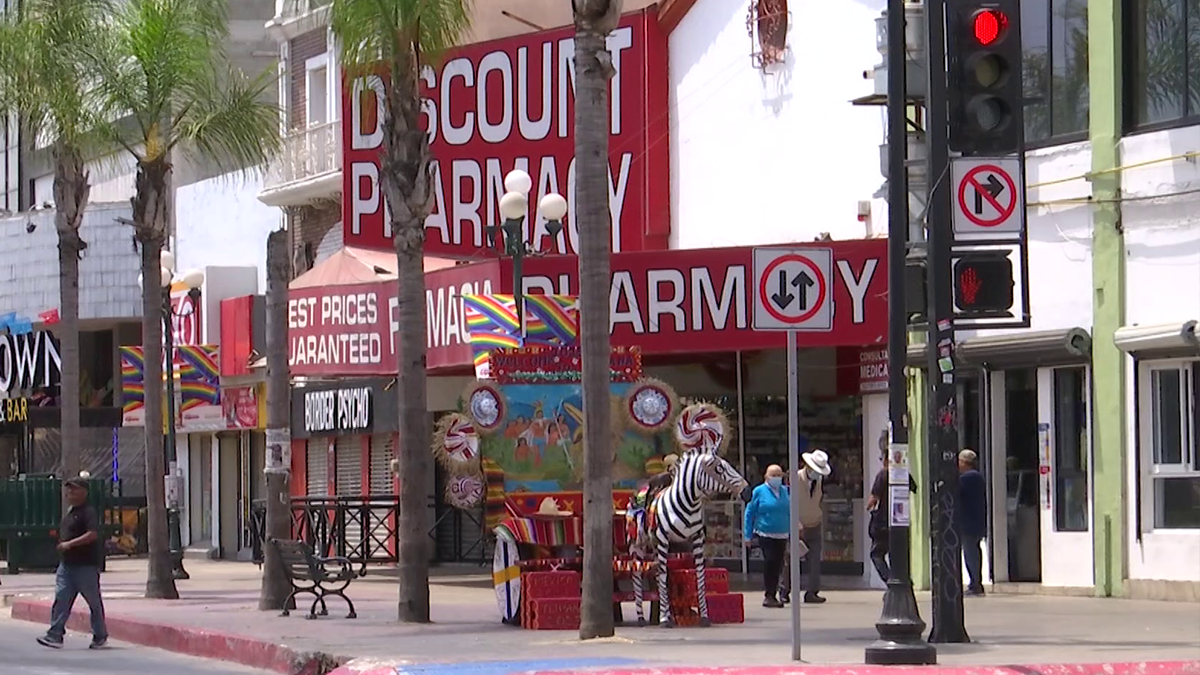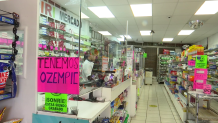
For many San Diegans, saving money on prescription drugs includes a trip across the border into Tijuana.
A federal government study found Americans who cross into Mexico can save about 60% on prescription drugs. That isn’t just people who don’t have insurance. The study compared the best discounted prices available on a variety of drugs to the cash price across the border.
Navigating the laws in both countries and understanding the safety risks can be a complicated proposition for first-timers.
NBC 7 Investigates caught up with Spring Valley massage therapist Rocio Cordero in July as she returned from Tijuana after filling prescriptions. Between her anxiety and high blood pressure medication, she said the savings really add up.
“Oh, it’s less expensive,” Cordero said. “I’m a single mom, so I take care of my two kids by myself, and it will take a lot of my paycheck.”
Cordero has been filling her prescriptions in Mexico for the last two years, and said the biggest drawback is the time it takes.
“Sometimes, it takes two hours if I cross by San Ysidro,” Cordero told us. “Here is a little easier, but still, it’s a hassle to commute back and forth.”
Complying with the law
NBC 7
NBC 7 The San Ysidro border crossing into Tijuana.
Americans who are considering cashing in on some of the savings need to first make sure their prescription is on the list of approved drugs allowed to be brought into the United States. Customs and Border Protection puts out a medication list each year.
CBP also caps the amount of medication you’re allowed to bring back to a 30-day supply.
Mexican pharmacies aren’t legally allowed to fill prescriptions unless they’ve been written by a doctor who’s licensed in Mexico. Many large-chain pharmacies employ on-site doctors who examine patients, create treatment plans, and write prescriptions. Otherwise, patients need to schedule appointments at a Mexican clinic before traveling abroad.
Álvaro González has worked as a pharmacist in Tijuana for seven years. He said the laws are the way they are for good reason.
“We have certain rules that mean we can’t sell just any medication, because we don’t know what kind of problem people have,” González said. “They may be allergic to a particular medication, and it could harm them.”
When it comes time to cross back into the United States, Americans will need to have copies of written prescriptions from both a doctor licensed in the U.S. and their Mexican counterpart.
Weighing the risks for safety

NBC 7
NBC 7 Inside a pharmacy in Tijuana.
UCLA Associate Professor of Epidemiology Chelsea Shover says the safety of medications you can get in Tijuana can vary.
“I think it depends on what you’re buying and how you’re buying and what you’re concerned about and what you’re doing to minimize risk,” Shover said.
Two years ago, Shover co-authored a study that found some prescription drugs bought in Mexico were laced with fentanyl and heroin. But she stressed the study focused only on drugs meant to be prescription opioids, amphetamine salts like Adderall, and benzodiazepines like Xanax.
The study reported that counterfeit pills containing fentanyl, heroin, and/or methamphetamine were sold at 11 pharmacies. Of 45 pill samples, nine sold as Adderall contained methamphetamine, eight sold as Oxycodone had fentanyl, and three sold as Oxycodone contained heroin.
Shover’s study only tested drugs sold as a single pill to someone without a prescription, which is illegal.
“It would be a mistake to walk away thinking that you’re going to go into a pharmacy in Mexico and come out with fentanyl unless you’re trying to buy an opioid that should not be sold to you without a prescription,” Shover said. “A lot of the pharmacies that were approached rightly refused to sell a single pill of a controlled substance. And that’s good.”
González said his pharmacy has safeguards to ensure drugs are authentic.
“Normally, all the products we receive come from an established supplier, and it’s almost impossible for us to sell a counterfeit medication,” González told us.
González said pharmacies also review notices they receive from the Mexican health regulator COEPRIS, which could alert them about fake medication.
Another important thing to keep in mind: Shover said not all drugs prescribed in the U.S. can be found on the Mexico formulary, which is a big red flag that it may be counterfeit. A good example is Adderall. While popular in the U.S., it’s not prescribed in Mexico.
So if you find it in Tijuana, Shover said that means it’s most likely a counterfeit pressed pill, likely made with methamphetamine, or medication that was originally purchased in the U.S. and being sold in Mexico.
If you’re not sure what you’re getting is legitimate, Shover said a great tool is a fentanyl test strip. The California Department of Public Health publishes a list of groups online that provide free or low-cost fentanyl test strips. That includes eight in San Diego County:
!function(){“use strict”;window.addEventListener(“message”,function(a){if(void 0!==a.data[“datawrapper-height”]){var e=document.querySelectorAll(“iframe”);for(var t in a.data[“datawrapper-height”])for(var r,i=0;r=e[i];i++)if(r.contentWindow===a.source){var d=a.data[“datawrapper-height”][t]+”px”;r.style.height=d}}})}();
Source link

